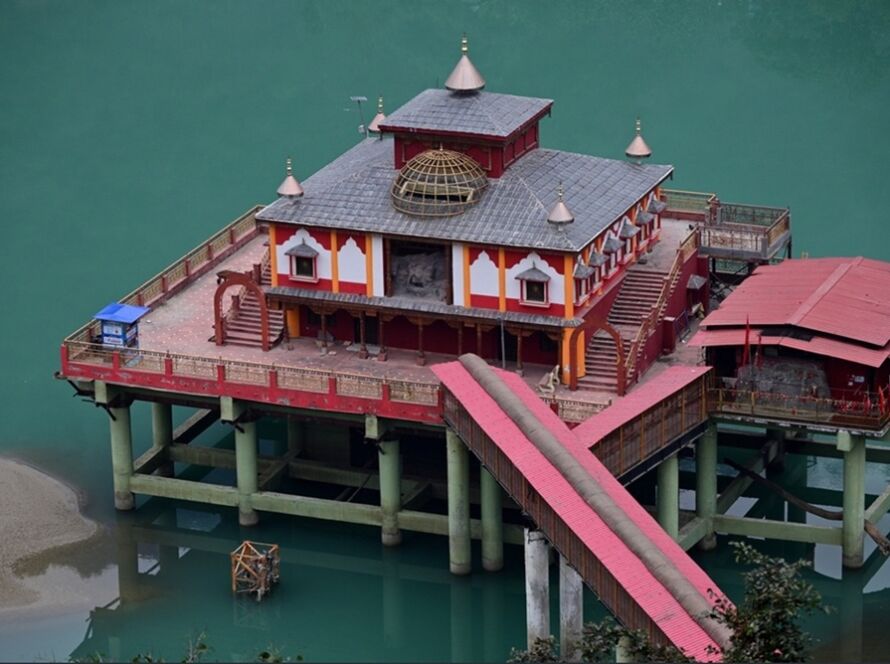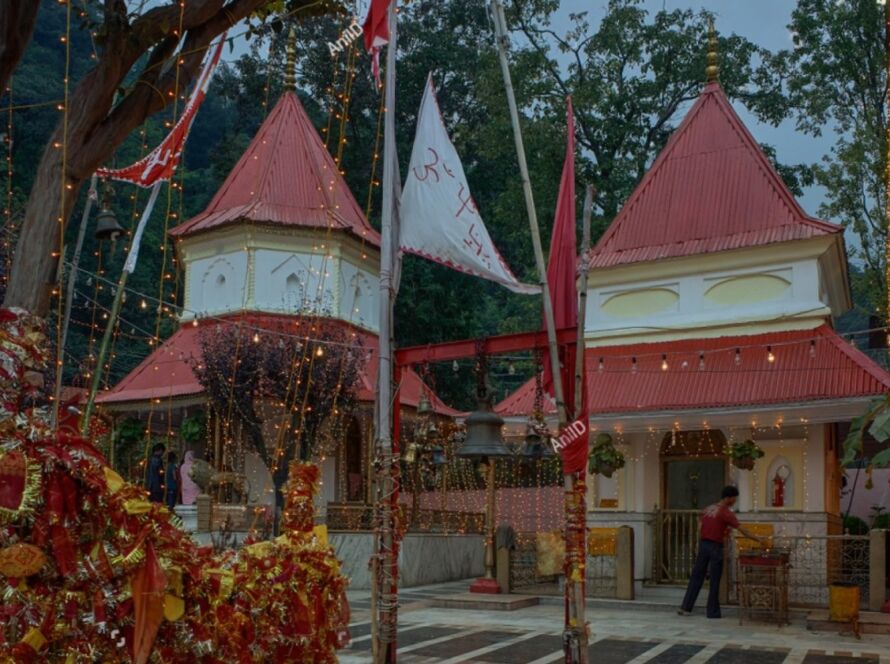Have you ever dreamt of walking a path where every step echoes with ancient chants and misty Himalayan views surround you? The Madhmaheshwar Trek, nestled in the Garhwal region of Uttarakhand, is more than just a trail—it’s a spiritual pilgrimage and a nature lover’s escape rolled into one.
As one of the revered Panch Kedar shrines dedicated to Lord Shiva, Madhmaheshwar sits quietly at 3,497 meters, accessible only through a moderately challenging trek. With rising interest in spiritual eco-tourism in 2025, this route is drawing attention from trekkers and cultural explorers alike.
In this blog, you’ll uncover the history of Madhmaheshwar, insider trekking tips, hidden gems along the route, and how to travel responsibly. If you’re planning a Himalayan trek that blends faith, folklore, and forest beauty, you’re in the right place.
According to mythology, the 5 Kedars are the temples including Kedarnath, Madhmaheshwar, Tungnath, Rudranath, and Kalpnath. All five sites are positioned in the Garhwal region of Uttarakhand and are dedicated to Lord Shiva.
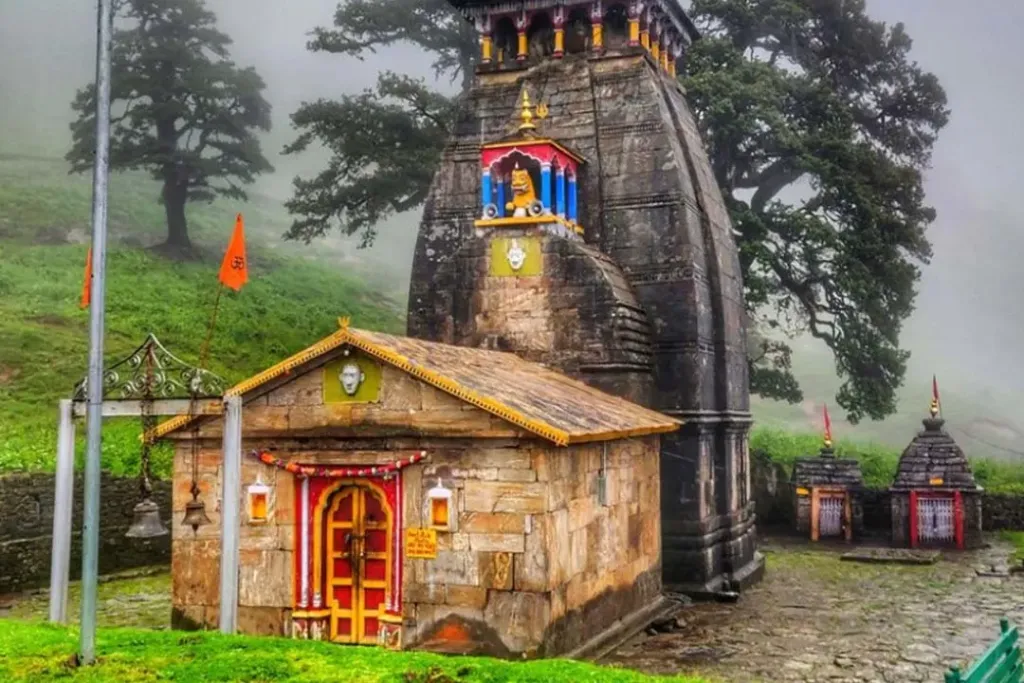
Historical and Cultural Context
Built in classic North Indian Nagara style, the temple is constructed with stone slabs and stands surrounded by alpine meadows and snowy cliffs. The sanctum houses a swayambhu (self-manifested) Shiva lingam, which is revered for its unique oval shape.
The Madhmaheshwar Temple is part of the sacred Panch Kedar circuit, which, according to legend, was established by the Pandavas in search of Lord Shiva’s forgiveness after the Kurukshetra war. In the Garhwal Himalayas, Shiva is believed to have taken the form of a bull and disappeared into the ground, reappearing in parts at five locations—Madhmaheshwar being the spot where his navel (madhya) emerged.
The village around the temple comes alive during the summer when pilgrims and trekkers arrive. Local folklore and folk songs celebrate the legends of Shiva and the bravery of the Pandavas.
Even today, the temple priest hails from the southern state of Karnataka, following Adi Shankaracharya’s tradition of unifying different parts of India through pilgrimage.
Culturally, the trek is not just a hike but a journey of purification and self-discovery, deeply rooted in Uttarakhand’s devotional heritage.
Geographical Significance and Location
The Madhmaheshwar Temple, an architectural and spiritual marvel, is built in the classic North Indian Nagara style, using sturdy stone slabs that blend seamlessly with the alpine meadows and snow-covered cliffs that surround it. At its heart lies a swayambhu (self-manifested) Shiva lingam, revered for its distinct oval shape, drawing both devotees and trekkers to this remote Himalayan sanctuary.
This temple is part of the revered Panch Kedar circuit, which—according to ancient legend—was established by the Pandavas during their quest for redemption after the Kurukshetra war. Lord Shiva, displeased with them, is said to have taken the form of a bull and disappeared into the ground, later reappearing at five distinct locations. Madhmaheshwar marks the site where his navel (madhya) is believed to have surfaced.
✨ Cultural and Spiritual Highlights:
- 🛕 The temple is surrounded by soul-stirring Himalayan landscapes, enhancing its aura of divinity.
- 🎵 Local folk songs and stories continue to preserve the tales of Lord Shiva and the Pandavas, enriching every visit with mythological depth.
- 🔱 Priestly traditions are still maintained from the time of Adi Shankaracharya, with priests hailing from Karnataka, representing India’s spiritual unity.
- 🧘♀️ The journey to the shrine is regarded not just as a trek, but as a path of inner cleansing and spiritual awakening, rooted deeply in Uttarakhand’s devotional legacy.
The temple and its trail offer more than scenic beauty—they promise a transformative experience woven with mythology, architecture, and high-altitude serenity.
Main Highlights and Attractions
1. The Sacred Madhmaheshwar Temple
The highlight of the trek is undoubtedly the serene Madhmaheshwar temple. Sitting against the backdrop of Chaukhamba, the temple’s setting is meditative and energizing. Attend the early morning Aarti for a spiritually moving experience.
2. Buda Madhmaheshwar (Optional Trek)
A 2 km hike above the temple leads to Buda Madhmaheshwar, a high-altitude lake with panoramic views of Kedarnath, Neelkanth, and Chaukhamba peaks. It’s one of the most peaceful and rewarding spots on the trail.
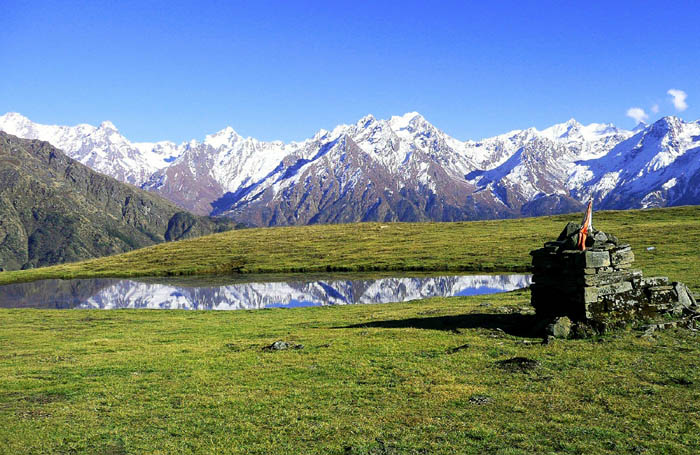
3. Scenic Campsites at Bantoli and Nanu
🏞️ Bantoli, where the Madhmaheshwar Ganga meets another mountain stream, is a favorite camping site.
🛖 Nanu, a quaint village, offers warm hospitality and a cultural touch through Garhwali traditions.
4. Diverse Flora and Fauna
The trail is filled with wildflowers, medicinal herbs, and dense forests. Spotting the Himalayan monal or barking deer adds to the excitement for nature lovers.
5. Photography & Visual Appeal
🌄 Capture golden sunrise shots at Buda Madhmaheshwar.
💧 Frame the reflections of Chaukhamba on alpine lakes.
🌫️ Try time-lapse videos of mist drifting over pine forests.
💡Pro Tip:
Trek early in the morning to catch the clearest skies and golden hour lighting.
Mind-Blowing Facts and Trivia
❄️ The temple remains inaccessible for 6 months due to heavy snowfall; the idol is moved to Ukhimath for winter worship.
🙏 Madhmaheshwar is the second Panch Kedar shrine in the order of pilgrimage after Kedarnath.
💧 Locals believe the water of the nearby stream can heal stomach ailments.
🐑 The trail is part of a migration route for Himalayan sheep and goats.
🧘♂️ Buda Madhmaheshwar is known as the spot where Shiva meditates in peace.
🌏 The Kedarnath Wildlife Sanctuary surrounding the trail is a UNESCO-recognized biodiversity hotspot.
Latest News and Recent Developments
As of early 2025, the Uttarakhand Tourism Development Board has launched new eco-tourism guidelines for the Madhmaheshwar trek, focusing on plastic waste reduction and responsible camping.
In December 2024, the trail was upgraded with solar lighting poles at key bends and mobile connectivity towers near Bantoli, improving communication and safety. Additionally, new signage has been placed in both English and Garhwali to aid cultural interpretation for international trekkers.
The region is also being promoted under the “Spiritual Trekking Circuit” initiative to attract more offbeat pilgrims and environmentally conscious tourists. This has boosted local employment through guide training and homestay certifications.
Trekkers are advised to book eco-certified guides and follow new group size limits (max 10 per guide) for minimal ecological impact.
Practical Travel Tips and Recommendations
- Best Time to Visit: May to mid-June and mid-September to October (avoid monsoon months).
- Trek Duration: 4–5 days from Ransi to Madhmaheshwar and back.
- Weather: Can change quickly; pack rain gear and warm layers.
- Permits: No special permit needed but register at the forest check post.
- Stay Options: Homestays at Ransi, Nanu, and temple dharamshalas.
- Transport: Shared taxis from Ukhimath to Ransi; public buses till Ukhimath.
- Essentials to Pack:
- Trekking shoes
- First aid kit
- Power bank and torch
- Dry snacks and refillable bottle
- Download offline maps (low network areas)
💡 Local Tip:
Respect village customs. Avoid loud music and carry your waste back.
Personal Experience
On a crisp October morning, as I stood before the Madhmaheshwar temple wrapped in a cloak of fog, I felt time slow down. The rhythmic chants, bells ringing softly, and the scent of wet earth created an atmosphere I had never experienced before.
The silence at Buda Madhmaheshwar, broken only by wind whistling through the ridges, felt like Shiva’s breath echoing across the valley. I had come for the views, but I left with something deeper—a connection to divinity etched into stone and sky.
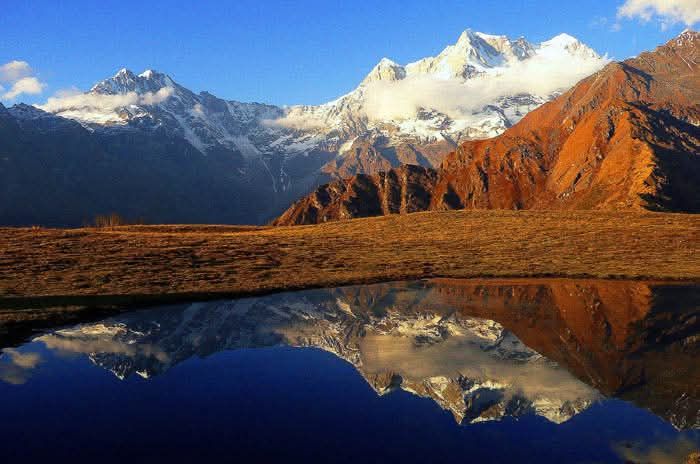
Environmental and Sustainable Practices
The region around Madhmaheshwar is ecologically fragile. The local community, along with forest authorities, is actively promoting sustainable trekking practices. Camping is now regulated to prevent vegetation damage, and biodegradable toilets are encouraged.
Eco-clubs in Ukhimath and Guptkashi organize clean-up drives along the trail every season. Trekkers are expected to avoid single-use plastic and participate in Leave No Trace practices.
The use of solar-powered lights and rainwater harvesting systems in homestays is also rising, thanks to new eco-tourism grants.
Travelers are encouraged to:
- Carry reusable bottles and cloth bags
- Stay in homestays that follow green certification
- Donate to local NGOs supporting trail conservation
How To Reach Madhmaheshwar
To reach the Madhmaheshwar trek from Dehradun by road, you need to travel to Ransi Village, which is the last motorable point. From Ransi, the Madhmaheshwar trek is approximately 16 km.
Here are the driving directions from Dehradun to Ransi Village: Here is the road map for your trek to Madhmaheshwar from Dehradun:
Driving Directions to Ransi Village (the trek’s starting point):
- Origin: Dehradun, Uttarakhand, India
- Destination: Ransi, Uttarakhand, India
- Distance: 237 km
- Estimated Driving Duration: 7 hours, 1 minute
- Summary: Take NH 7
Trek Information:
- From Ransi Village, the Madhmaheshwar trek is approximately 16 km.
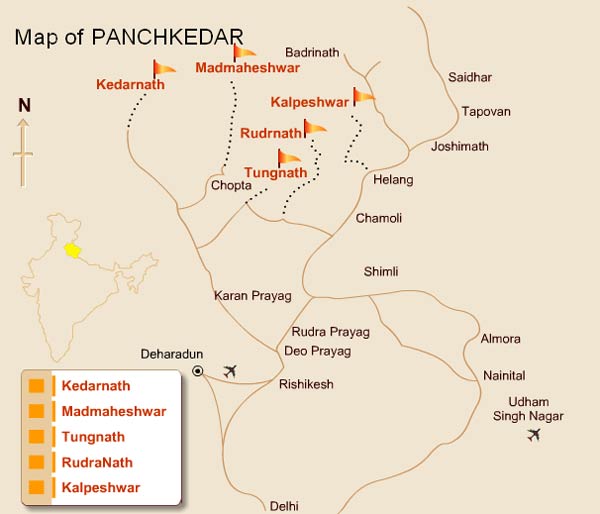
(FAQ)
Q1: How difficult is the Madhmaheshwar trek?
Moderate. Good for fit beginners. Includes steep ascents and long daily walks.
Q2: Do I need a guide?
Not mandatory but recommended for safety and local insight.
Q3: Are there ATMs or medical facilities?
Nearest ATMs in Ukhimath. Carry cash. Basic first aid only en route.
Q4: Is it safe to trek solo?
Yes, but notify local authorities and avoid trekking post-sunset.
Q5: Is the trail open post-monsoon?
Yes, but check for landslide updates before starting.
Takeaway
The Madhmaheshwar Trek is more than a destination—it’s a spiritual and ecological journey that stays with you long after you return. From ancient legends and soul-stirring temples to panoramic views and forest trails, every step brings you closer to nature and mythology.
Ready to walk the divine path? Plan your trek, pack light, tread gently, and experience Uttarakhand like never before.
➡️ Have questions or tips from your own trek? Share in the comments.

